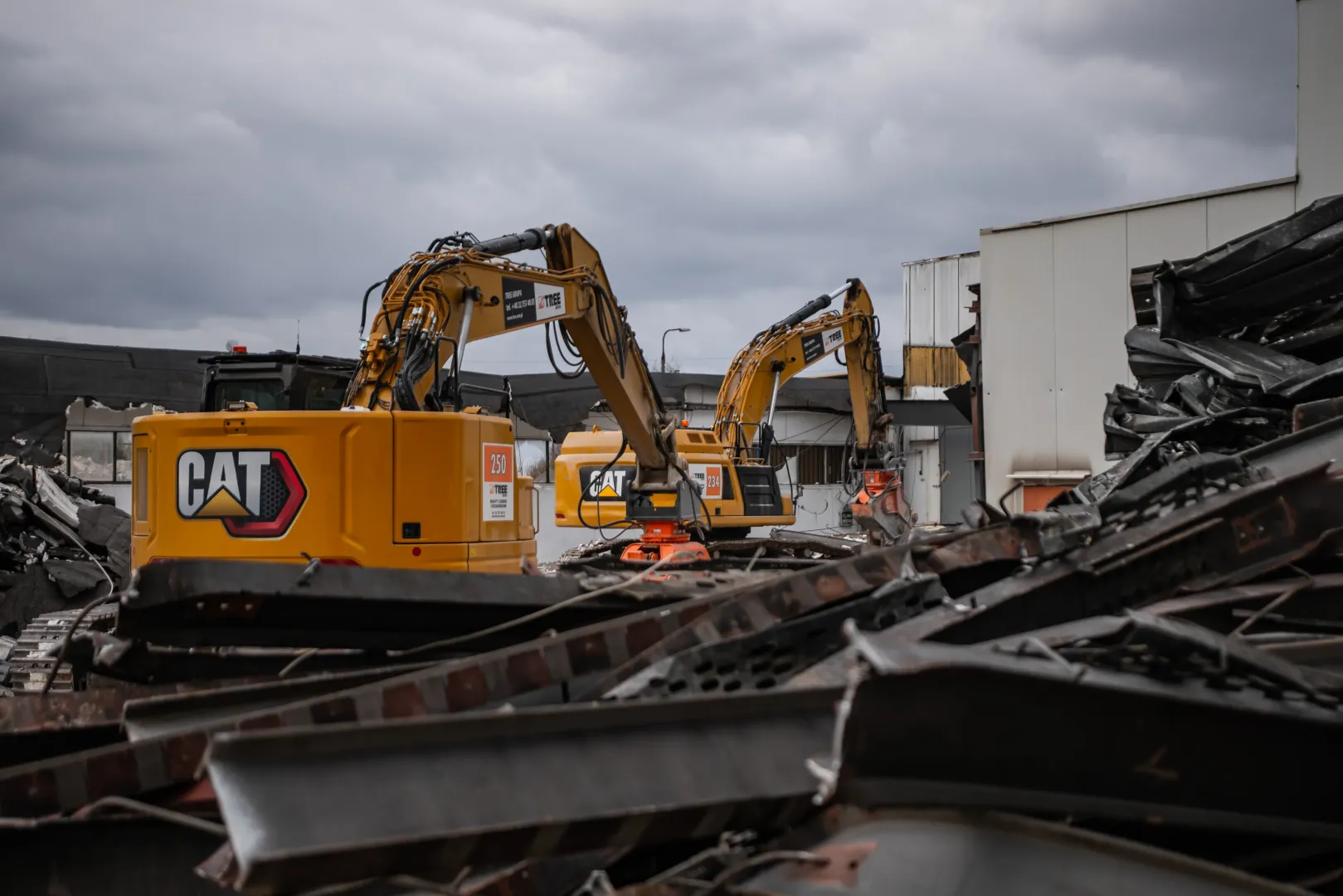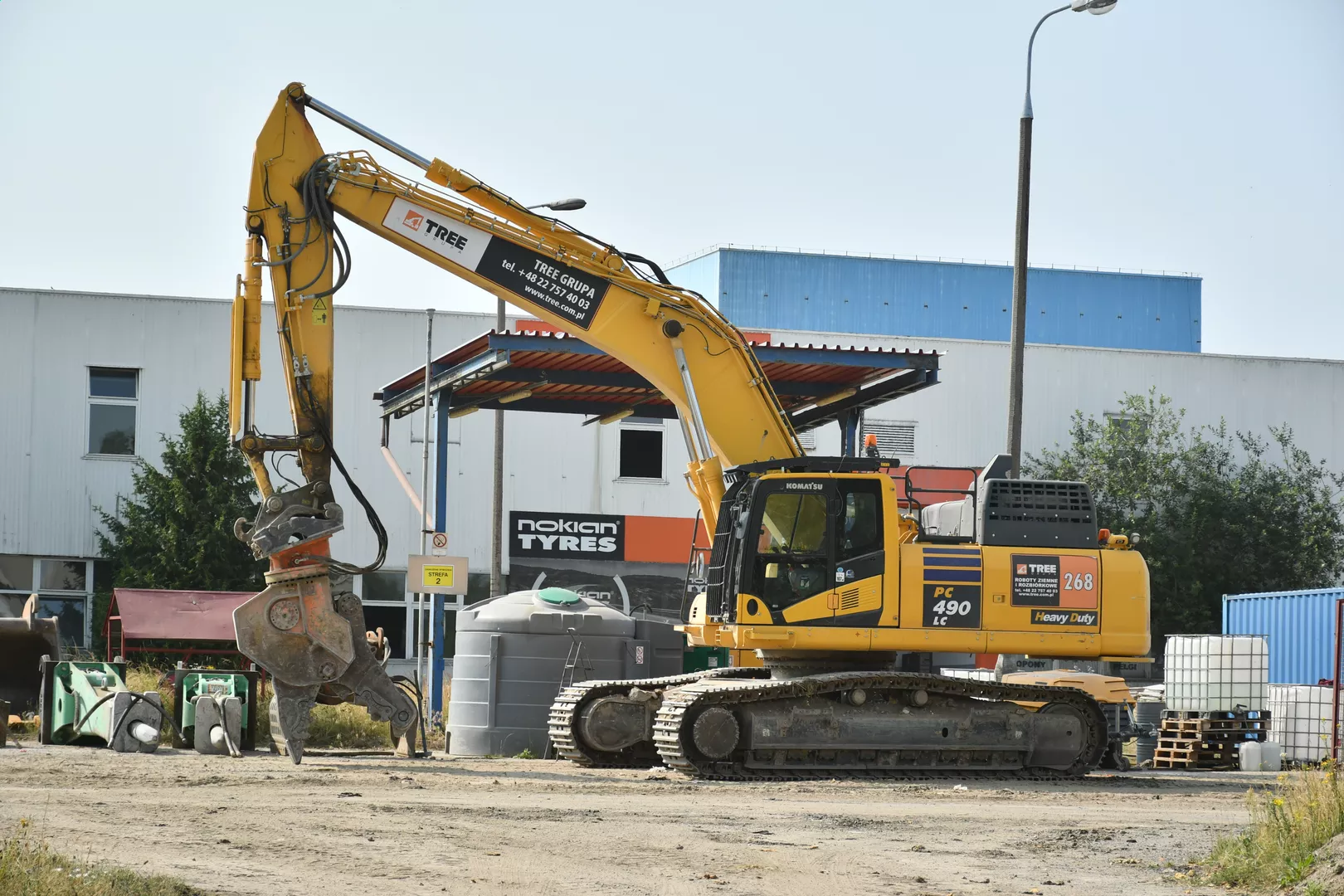
Comprehensive Guide to Building Demolition in Warsaw - Procedures and Formalities
A complete guide explaining all formal procedures related to building demolition in Warsaw, from obtaining permits to post-completion documentation. Learn the step-by-step process, legal requirements, and practical tips to facilitate your demolition
Comprehensive Guide to Building Demolition in Warsaw - Procedures and Formalities
Introduction
Demolishing a building in Warsaw is a process that requires careful planning, knowledge of regulations, and completion of numerous formalities. Regardless of whether you're planning to demolish a small utility building, a single-family house, or a larger commercial facility, you must meet specific legal and administrative requirements. In this guide, we will comprehensively discuss all necessary procedures and formalities related to demolitions in Warsaw, based on the latest regulations in effect in 2025.
1. Before You Begin - Legal Assessment of the Property
Before you start planning the demolition, it's essential to verify the legal status of the property:
- Check the land and mortgage register - ensure that you are the owner or have the right to dispose of the property for construction purposes
- Verify the local spatial development plan (MPZP) - check if there are any demolition restrictions
- Make sure the building is not under conservation protection - many buildings in Warsaw are protected by the heritage conservator
- Check if the property is not subject to decree claims (this particularly applies to buildings in the central districts of Warsaw)
Helpful tools for verification:
- Warsaw City Map Portal: mapa.um.warszawa.pl
- National Geoportal: geoportal.gov.pl
- Warsaw Spatial Information System: waw.maps.arcgis.com
2. Obtaining Demolition Permits
2.1 When is a demolition permit required?
In Warsaw, according to the Construction Law, a demolition permit is required for:
- Buildings higher than 8 meters
- Objects listed in the register of monuments or under conservation protection
- Objects whose demolition may affect the safety of people or property
- Objects with complex construction or located in densely built-up urban areas
2.2 When is a demolition notification sufficient?
A demolition notification is sufficient for:
- Buildings up to 8 meters high
- Buildings not listed in the register of monuments and not under conservation protection
- Objects whose demolition will not affect the safety of people or property
2.3 Procedure for obtaining a demolition permit
The application for a demolition permit should be submitted to the Architecture and Construction Department for the district where the property is located. The application must include:
Demolition project - prepared by a licensed designer, containing:
- Technical description specifying the sequence and method of demolition works
- Description of how to ensure the safety of people and property
- Description of how to manage materials from the demolition
- Necessary drawings, sketches, and photographic documentation
Consent of owners of adjacent objects - if the demolition may affect their interests
Agreements with appropriate network operators (gas company, power company, waterworks, etc.) if the object is connected to networks
Decision on environmental conditions - in cases specified in environmental protection regulations
Permission from the conservator of monuments - if the object is under conservation protection
Proof of payment of stamp duty - currently 36 PLN (as of 2025)
The application can be submitted in person at the district office or electronically via the ePUAP platform.
2.4 Procedure for demolition notification
The demolition notification is submitted to the Architecture and Construction Department for the district where the property is located. The notification should include:
- Description of the scope and method of demolition works
- Start date of works
- Documents confirming the right to dispose of the property
- Sketches or drawings - as needed
- Consent of owners of adjacent objects - if the demolition may affect their interests
- Agreements with appropriate network operators
The architectural and construction administration authority may, within 21 days from the date of delivery of the notification, raise an objection. The absence of an objection means that you can proceed with the demolition.
3. Preparation for Demolition
3.1 Choosing a Demolition Company
When choosing a demolition company in Warsaw, pay attention to:
- Experience in similar projects - especially in urban areas
- Certificates and qualifications held
- Civil liability insurance
- References and opinions from other clients
- Equipment and technologies available to the company
3.2 Preparing the Demolition Site
Before starting the demolition, you should:
- Fence and mark the demolition area - in accordance with health and safety requirements
- Obtain a permit to occupy the road lane - if it is necessary to occupy the sidewalk or roadway (the application should be submitted to the Municipal Road Authority)
- Notify neighbors about planned demolition works
- Disconnect all utilities - electricity, gas, water, sewage
- Remove hazardous materials from the building (e.g., asbestos, chemicals)
3.3 Waste Management Plan
According to current regulations in Warsaw, it is necessary to develop a waste management plan that specifies:
- Types and quantities of waste resulting from the demolition
- Method of selective collection of individual waste fractions
- Method of waste transport
- Waste storage or recycling locations
All demolition waste must be transferred to authorized entities, and the property owner is obliged to have documents confirming their proper management.
4. Demolition Implementation
4.1 Duties of the Demolition Manager
The demolition manager is obliged to:
- Maintain a demolition journal
- Ensure safety in the demolition area
- Supervise the compliance of the works with the demolition project
- Coordinate work with network operators in case of the need to disconnect or secure utilities
4.2 Required Controls and Inspections
During the demolition, controls may be carried out by:
- District Building Supervision Inspectorate for Warsaw
- State Labor Inspection
- Provincial Environmental Protection Inspectorate
- Municipal Police - mainly in terms of maintaining cleanliness and order
4.3 Specific Requirements for Warsaw
In Warsaw, there are special requirements regarding:
- Hours for conducting noisy works - usually they can be carried out on working days between 6:00 AM and 10:00 PM
- Dust limitation - it is necessary to use methods minimizing dust emissions, e.g., spraying
- Transport of rubble and waste - vehicles must be properly secured, and transit routes often need to be agreed with the Municipal Road Authority
5. After Demolition Completion
5.1 Post-Completion Documentation
After completing the demolition, post-completion documentation should be prepared, including:
- Statement of the demolition manager on the compliance of the work with the project
- Documents confirming the proper management of waste
- Protocols for accepting the area by network operators (if applicable)
- Photographic documentation of the site condition after demolition
5.2 Notification of Demolition Completion
After completing the demolition, you should notify:
- District Building Supervision Inspectorate for Warsaw
- Architecture and Construction Department for the district where the property is located
5.3 Updating the Land and Building Register
After completing the demolition, it is necessary to report the change in the land and building register. The application should be submitted to the Office of Geodesy and Cadastre of the Warsaw City Office, attaching:
- Notification of demolition completion
- Copy of the demolition permit or demolition notification
- Geodetic post-completion inventory (if required)
6. Costs and Duration of Procedures
6.1 Estimated Administrative Costs
- Fee for demolition permit: 36 PLN
- Fee for extract and outline from MPZP: approx. 60-100 PLN
- Fee for occupying the road lane: depends on the area, location, and duration of occupation (from several hundred to several thousand PLN)
- Fee for updating the land and building register: approx. 150-200 PLN
6.2 Approximate Duration of Procedures
- Obtaining a demolition permit: up to 65 days
- Processing a demolition notification: up to 21 days
- Obtaining permission from the conservator of monuments (if required): up to 30 days
- Obtaining a permit to occupy the road lane: up to 14 days
- Updating the land and building register: up to 30 days
7. Common Problems and How to Avoid Them
7.1 Resident Protests
In Warsaw, there are often protests from residents against demolitions, especially in the case of buildings with historical or sentimental value. To minimize the risk of conflicts:
- Organize information meetings with residents of surrounding buildings
- Inform in advance about the work schedule
- Minimize nuisances related to noise, dust, and traffic difficulties
7.2 Discovery of Elements with Historical Value
If elements of potential historical value are discovered during demolition:
- Stop the works
- Immediately notify the Mazovian Provincial Conservator of Monuments
- Secure the discovered elements
7.3 Damage to Neighboring Buildings
To avoid damage to neighboring buildings:
- Perform a detailed inventory of the technical condition of neighboring buildings before starting demolition
- Monitor the impact of demolition works on neighboring structures
- Use demolition methods that minimize vibrations and shocks
8. Specifics of Warsaw Districts
8.1 Śródmieście, Praga-Północ, Praga-Południe
In these districts, special attention should be paid to:
- Conservation protection - many buildings are listed in the register of monuments or in the municipal register of monuments
- Decree claims - check if the building is not subject to claims based on the so-called Bierut Decree
- Dense development - special protection of neighboring buildings is necessary
8.2 Wola, Mokotów, Ochota
In these districts, there are often:
- Remnants of bombs and unexploded ordnance from World War II - checking the area by sappers may be necessary
- Old underground installations not marked on maps - georadar surveys are recommended
8.3 Peripheral Districts (Białołęka, Wawer, Wilanów)
In these districts, attention should be paid to:
- Environmental protection - frequent requirement for environmental impact assessment
- Protection zones for water intakes - additional restrictions may apply
- Flood areas - check if the area is not in a flood risk zone
Summary
Conducting a legal demolition of a building in Warsaw requires careful preparation, knowledge of administrative procedures, and cooperation with various institutions and services. It is crucial to carefully prepare documentation and complete all formalities, which will help avoid delays, financial penalties, and conflicts with residents and neighbors.
Remember that each demolition case is individual and may require additional permits or agreements depending on the specifics of the building, its location, and the planned method of demolition. In case of doubt, it is always worth consulting with specialists - architects, construction engineers, and lawyers specializing in construction law.
Tree Group has extensive experience in conducting demolitions in Warsaw and provides professional advice at every stage of the process.
Tags
Share this guide
About the author
inż. Marek Nowak
Demolition Specialist at Tree Group
Category
Demolition
Reading time
15 minutes
Publication date
May 21, 2025
Similar guides

Turning off the lever on excavators with AdBlue system - instructions for operators
The AdBlue system is a key component of modern construction machinery, designed to reduce harmful emissions of nitrogen ...

Selective Demolition of Residential Buildings in the Warsaw Metropolitan Area - Benefits for Investors
A guide showing how selective demolition of residential buildings in Warsaw and surrounding areas can significantly redu...